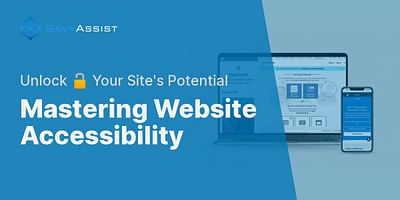Arthur is a seasoned UX designer and an authority in the field of accessibility consultancy. With a proven track record of collaborating with a multitude of companies, he has significantly enhanced the accessibility of their products. Arthur is driven by a fervor for crafting user experiences that are all-embracing and inclusive.
Hey there! Making your resume accessible for people with disabilities is a fantastic way to ensure equal opportunities for everyone. I'm here to help you with some tips and assistive technologies that can make your resume more accessible. Let's dive in!
1. Clear and Simple Formatting:
When it comes to creating an accessible resume, simplicity is key. Use a clean and easy-to-read font, like Arial or Calibri, and make sure the font size is at least 12 points. Avoid using fancy formatting, such as excessive bolding or italics, as it can be challenging for screen readers to interpret.
2. Use Headings and Subheadings:
Organize your resume using clear headings and subheadings. This helps individuals with visual impairments navigate through your document more easily. Screen readers can detect these headings, allowing users to jump directly to the sections they're interested in.
3. Alt Text for Images:
If you include any images or graphics in your resume, make sure to provide alternative text (alt text). Alt text is a brief description of the image that is read aloud by screen readers. It helps visually impaired individuals understand the content of the image and ensures they don't miss out on any important information.
4. Screen Readers:
Screen readers are assistive technologies that read out the content of a computer screen. They are essential for individuals with visual impairments. To make your resume compatible with screen readers, avoid using images as text and ensure that all text is selectable and readable by the software.
5. Speech-to-Text Software:
Speech-to-text software, also known as dictation software, allows individuals with mobility impairments or those who have difficulty typing to speak their resume instead. This software converts spoken words into written text, making it a great tool for creating accessible resumes. Popular speech-to-text software includes Dragon NaturallySpeaking and Google Docs Voice Typing.
6. Accessible Web Design:
If you're applying for jobs online, it's essential to ensure that the websites you're using are accessible. Look for job portals and company websites that follow web accessibility guidelines, such as providing alternative text for images and using proper heading structures. This ensures that individuals with disabilities can access and navigate the online application process smoothly.
7. Mobile Apps:
Many job search platforms and resume builders offer mobile apps that can be accessed on smartphones and tablets. Look for apps that prioritize accessibility features, such as compatibility with screen readers and support for speech-to-text input. These apps can make it easier for individuals with disabilities to create and submit their resumes on the go.
8. One-Handed Keyboards:
For individuals with limited hand mobility, using a traditional keyboard can be challenging. Consider using a one-handed keyboard, which allows you to type with just one hand. These keyboards are designed to be compact and ergonomic, making it easier to navigate and input information into your resume.
By implementing these tips and utilizing assistive technologies, you can make your resume more accessible for people with disabilities. Remember, creating an inclusive and accessible resume not only benefits individuals with disabilities but also showcases your commitment to diversity and equal opportunities. Good luck with your job search!











